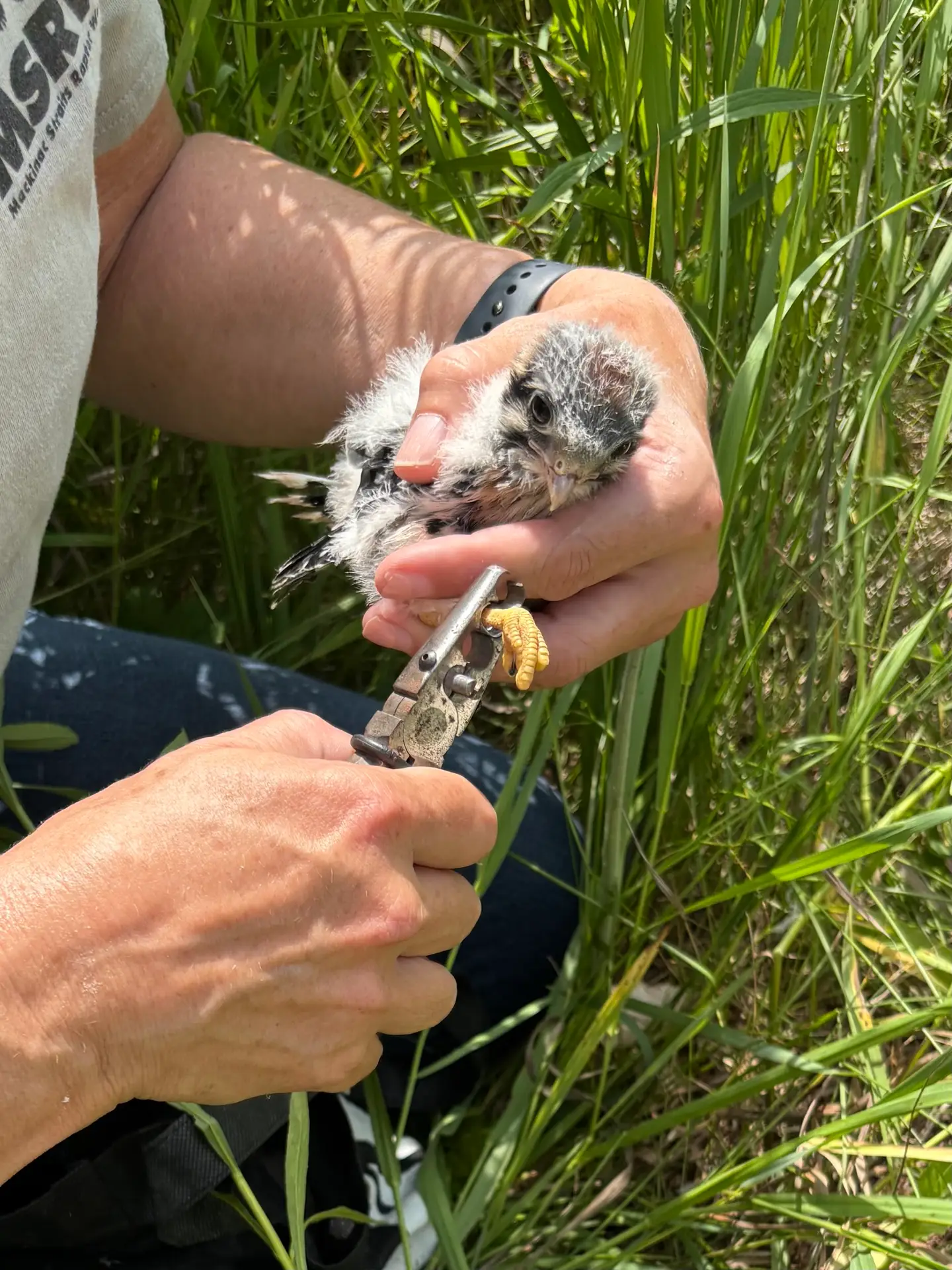As summer unfolds across northern Michigan, the American Kestrel nestling season has come to a close, and this year’s monitoring effort brought encouraging results. Fifteen nest boxes—scattered across Little Traverse Conservancy preserves and private properties—were home to chicks at just the right age for banding, between 13 and 23 days old. Unfortunately, there were 5 other boxes that were checked that either did not have kestrels nesting there, the kestrel nests that were there were not successful, or the chicks were too young/old to band.
In total, 47 kestrel chicks were banded: 25 females, 21 males, and one little fluffball just shy of being old enough to determine sex. In addition to the nestlings, two adult females were also safely banded.
Banding kestrels is a vital part of long-term bird conservation. The data collected is submitted to the USGS Bird Banding Laboratory and to Cornell University’s NestWatch program. According to NestWatch, this database “is intended to be used to study the current condition of breeding bird populations and how they may be changing over time as a result of climate change, habitat degradation and loss, expansion of urban areas, and the introduction of non-native plants and animals.”
These small falcons—North America’s tiniest—are not just beautiful and charismatic birds; they are indicators of environmental health. Monitoring their populations year after year helps researchers and conservationists understand how the landscape is changing and how we can better protect the habitats these birds rely on.
Thank you to Ed Pike, mentor and banding permit holder, Little Traverse Conservancy, landowners, and supporters who made this season a success!

